Tabouli (also spelled Tabbouleh) is a Levantine salad made with fresh chopped herbs, tomatoes, cucumber, and bulgur. It’s dressed in a light lemon vinaigrette and seasoned with salt and pepper. This powerhouse salad is loaded with delicious flavors and plenty of texture — no wonder it’s one of the most popular salads in the Middle East with its popularity spreading globally!
What’s The Difference Between Tabbouleh and Tabouli?
Both mean the same (just different spelling) for a fresh herb and bulgur Middle Eastern Salad or meze. This salad is vibrant and lively tasting with a hint of fresh lemon.
Tabouli Pronunciation
“tuh·bu·lee” (here’s a helpful pronunciation video)
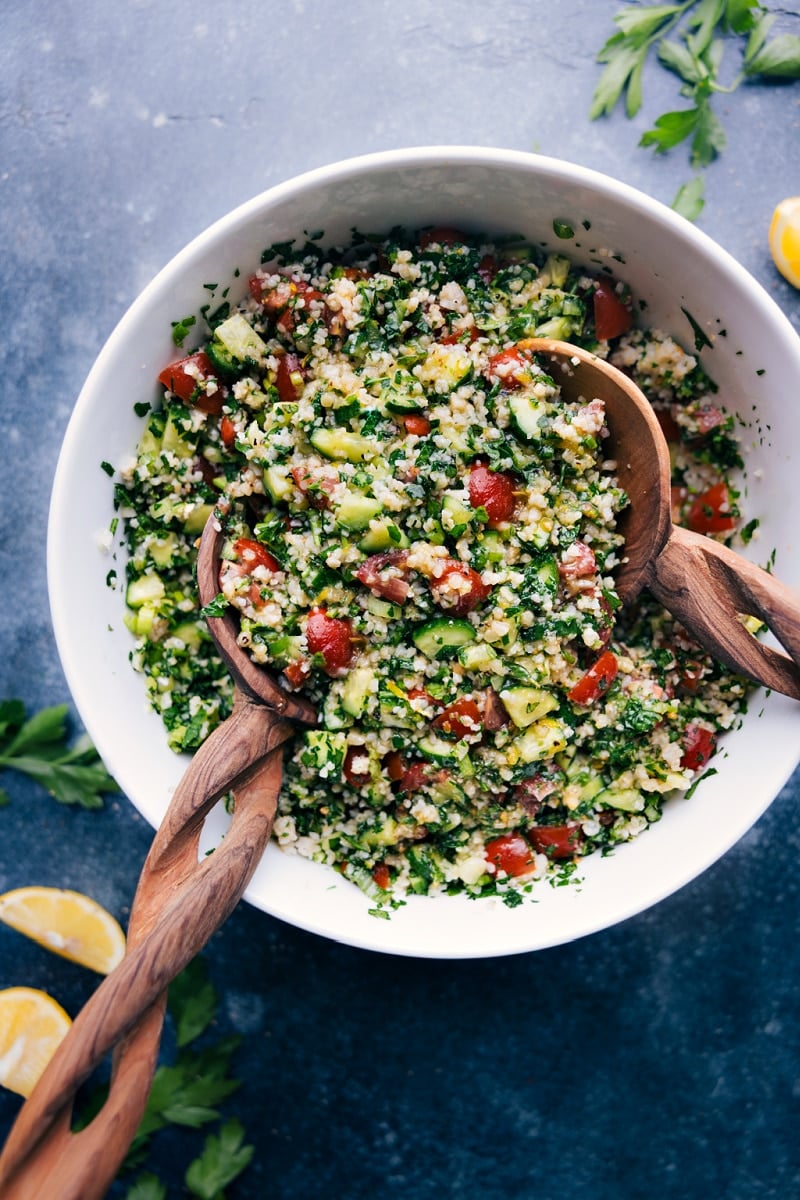
Tabouli Recipe From Dubai!
When we traveled through Dubai and the Maldives a couple of years ago, there were two salads we enjoyed pretty much everywhere — Tabouli and Fattoush (recipe coming soon!).
These salads were served on the side (or served as a meze beforehand) for almost every meal we enjoyed — along with plenty of hummus and baba ghanoush! Since returning, I’ve made this salad a number of times and am finally sharing it here.
Although I’ve added a couple of extra ingredients to the dressing (more than what is in a traditional tabouli recipe), this recipe is based on a recipe served at a restaurant we enjoyed while in Dubai.
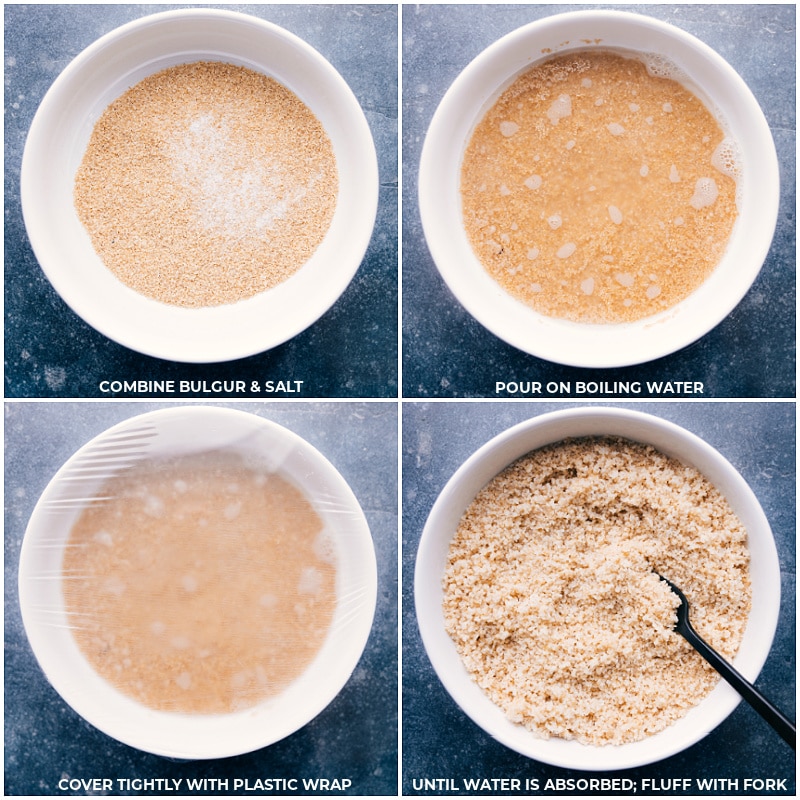
What Is In Tabouli?
The main ingredients are fresh chopped herbs, tomatoes, cucumber, and bulgur wheat. This salad is a great way to use garden-fresh produce like fresh herbs, tomatoes, cucumbers, etc.
More details on specific ingredients worth mentioning:
- Bulgur wheat. Bulgur is par-boiled wheat that is then dried to make a quick-to-fix grain. There are different varieties mainly varying in coarse-ness. We like fine bulgur best — not only does it make for the best texture in this salad, but it’s also so easy to prepare. I’ve found this can be a hard ingredient to find in mainstream grocery stores so it’s typically something I order online, but you can sometimes find it (depending) in the international section or in the area where packaged grain mixes are.
- Regular cucumbers don’t work as well. They don’t have enough flavor and are too watery. Stick to an English cucumber or Persian cucumbers (Persian cucumbers are sometimes labeled as mini/salad cucumbers).
- Make sure to get flat-leaf Italian parsley, as opposed to curly for this recipe. Flat-leaf parsley has a more robust flavor and curly parsley is used more commonly as a garnish.
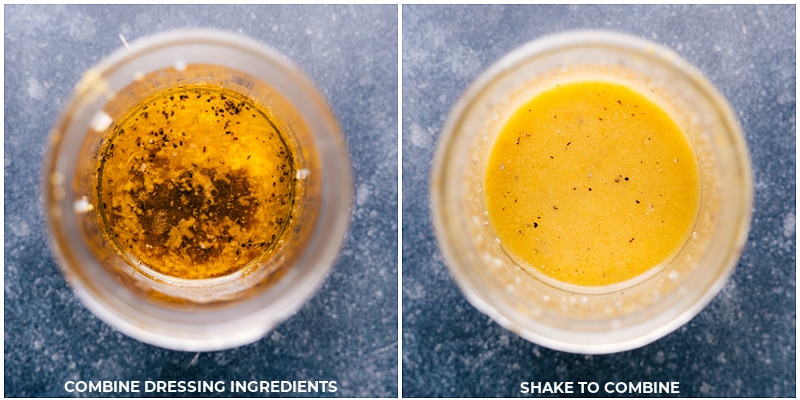
VARIATIONS
Recipe Variations
- Make couscous tabouli with small couscous. Couscous is actually small grains of semolina–so that means they’re tiny pasta balls! Because the pieces are so small, they cook quickly similar to the speed of cooking bulgur.
- Prepare quinoa tabouli by using quinoa instead. Quinoa is actually a seed (not a grain) so this is a great option if you’d like to enjoy this salad without gluten. (Bulgur does contain gluten since it is made of wheat.)
- While it’s not authentic, I love throwing in a diced, ripe avocado. That’s what’s so great about cooking at home: you can create the recipe that works best for you!
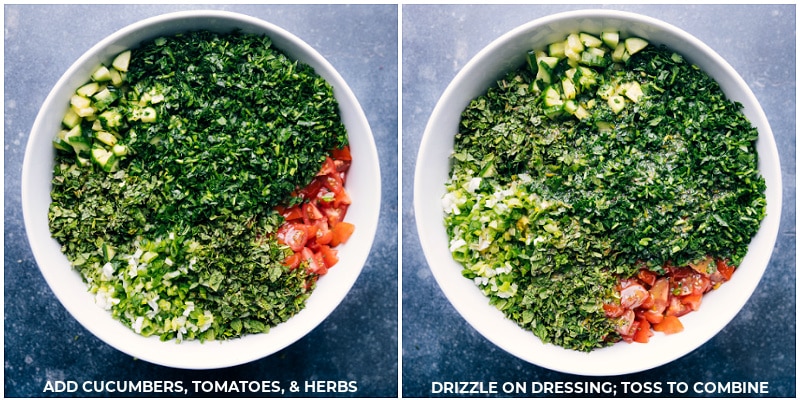
Is Eating Tabouli Healthy?
This is a nutritious, vegetarian dish that is high in fiber, low in fat, and filled with vitamins and minerals.
If you’d like to add more protein to this Tabouli recipe consider adding some roasted or air fried chickpeas, some grilled chicken, grilled flank steak, or grilled salmon. (For full nutritional breakdown and overall Tabouli calories, check out the nutrition facts panel below the recipe).
How Do You Eat Tabouli?
Traditionally it’s served as part of a meze or alongside proteins you can spoon it atop (almost like a fresh salsa!). We love serving it as part of a meal with some kind of grilled meat, warmed pita, and hummus (or baba ghanoush) on the side.
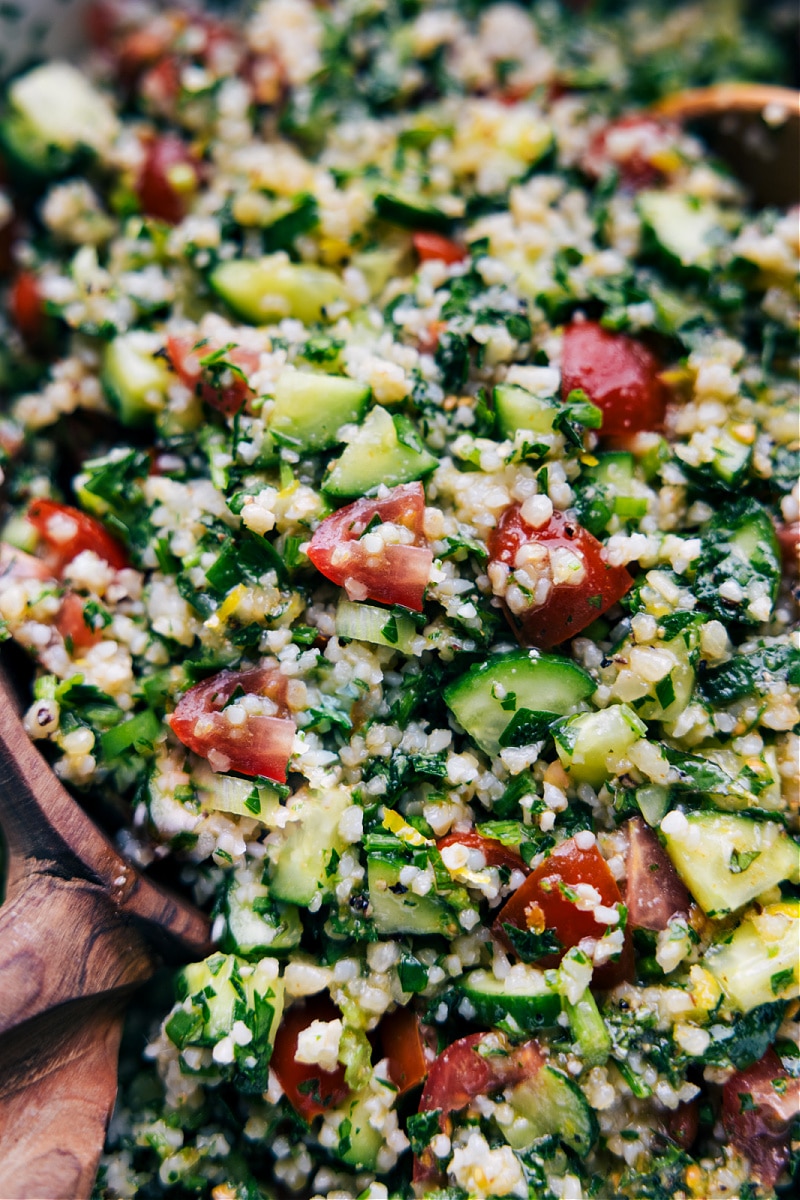
STORAGE
Salad Storage
This salad will stay fresh in an airtight container for 2-3 days, noting that the flavor (and smell) from the green onions becomes more intense every day. Before enjoying, make sure to give the stored salad a good stir and taste to see if it needs more seasoning or another squeeze of lemon. This salad doesn’t freeze or thaw well.
More Vibrant Salad Recipes:
Tabouli (Tabbouleh)
Tabouli (also spelled Tabbouleh) is a Levantine salad made with fresh chopped herbs, tomatoes, cucumber, and bulgur. It’s dressed in a light lemon vinaigrette and seasoned with salt and pepper. This powerhouse salad is loaded with delicious flavors and plenty of texture — no wonder it’s one of the most popular salads in the Middle East with its popularity spreading globally!
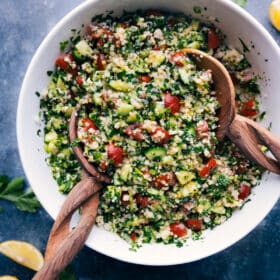
Tabouli (Tabbouleh)

Tabouli (also spelled Tabbouleh) is a Levantine salad made with fresh chopped herbs, tomatoes, cucumber, and bulgur. It’s dressed in a light lemon vinaigrette and seasoned with salt and pepper. This powerhouse salad is loaded with delicious flavors and plenty of texture — no wonder it’s one of the most popular salads in the Middle East with its popularity spreading globally!
Instructions
-
BULGUR: Bring a small pot of 1-1/4 cups of water to a boil. Meanwhile, add the bulgur to a large bowl. Sprinkle with 3/4 teaspoon salt and then pour the boiling water over. Stir, then cover the bowl tightly with plastic wrap. Let it sit at room temperature for 15-25 minutes, or until all the water is absorbed in the bulgur. Remove the plastic wrap and fluff with a fork. Let cool to room temperature. (If you’re in a hurry, pop it in the fridge!) We love making this part a day before — makes the salad come together so much quicker!
-
DRESSING: In a wide-mouth jar, combine all of the dressing ingredients. Season to taste (I add 3/4 tsp salt and 1/2 tsp pepper). Shake vigorously to combine and place in the fridge until ready to use.
-
SALAD: Add completely cooled bulgur, cucumbers, tomatoes, mint, parsley, and green onions to a large bowl. Toss gently. Add dressing and toss again. Taste and adjust seasoning to taste. Serve or refrigerate until ready to serve.
-
STORAGE: This salad will stay fresh in an airtight container for 2-3 days, noting that the flavor (and aroma) from the green onions becomes more intense every day. Before enjoying, make sure to give the stored salad a good stir and taste to see if it needs more seasoning or another squeeze of lemon. This salad doesn’t freeze or thaw well.
Recipe Notes
Note 2: Cucumbers: Regular cucumbers don’t work as well. They don’t have enough flavor and are too watery. Stick to an English cucumber or Persian cucumbers (Persian cucumbers are sometimes labeled as mini/salad cucumbers). You’ll need 1 large English cucumber or about 4-5 small salad cucumbers.
Note 3: Fresh herbs: I did try to speed up the prep by chopping all of the herbs in a food processor, but the result was lackluster — the herbs browned quicker, chopped unevenly, and got watery. Yes, it’s a lot of work (get a podcast going!), but this salad is best with hand-chopped herbs. Finely chop and tightly pack to get the proper measurement. Also, be sure to get flat-leaf Italian parsley, as opposed to curly for this recipe. Flat-leaf parsley has a more robust flavor and curly parsley is used more commonly as a garnish.
Nutrition Facts
Serving: 1serving | Calories: 124kcal | Carbohydrates: 14g | Protein: 2g | Fat: 7g | Saturated Fat: 1g | Polyunsaturated Fat: 1g | Monounsaturated Fat: 5g | Sodium: 32mg | Potassium: 229mg | Fiber: 3g | Sugar: 2g | Vitamin A: 405IU | Vitamin C: 18mg | Calcium: 21mg | Iron: 1mg
We do our best to provide accurate nutritional analysis for our recipes. Our nutritional data is calculated using a third-party algorithm and may vary, based on individual cooking styles, measurements, and ingredient sizes. Please use this information for comparison purposes and consult a health professional for nutrition guidance as needed.







More Stories
The 11 Forgotten Laws Review – The Truth On Bob Proctor’s Course
Catering Services: A Brief Introduction
Lizard Eating Plant